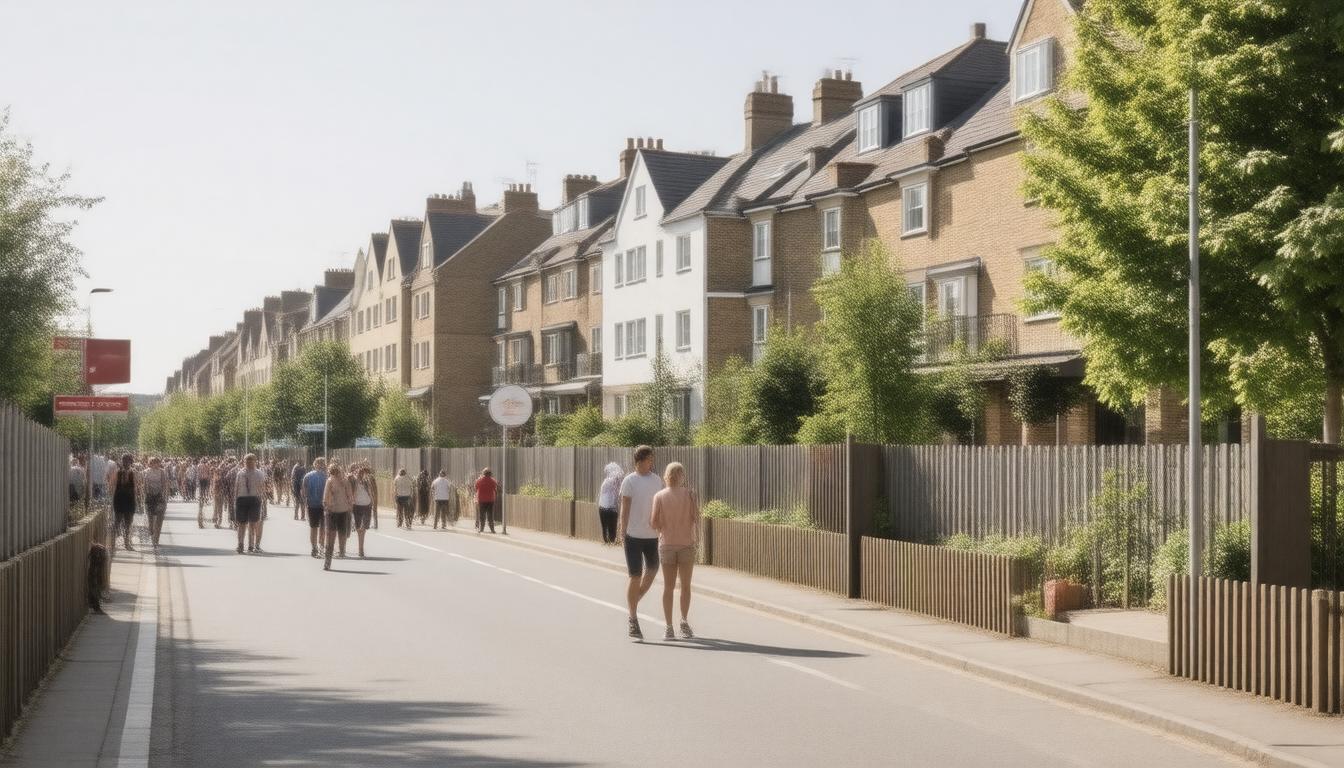In February 2025, the UK housing market demonstrated notable resilience with house prices observing a growth of
0.4%, a significant increase from the
0.1% rise recorded in January. The year-on-year figures illustrate a healthier market, with prices soaring by an average of
3.9%, culminating in an average property value of £270,493 (Nationwide, 2025). According to Robert Gardner, the chief economist at Nationwide, the number of housing transactions also showed an upswing, increasing by 14% in the latter half of 2024 compared to the previous year, although transactions for the entire year remained 6% lower than pre-pandemic levels in
2019. While first-time buyer activity is beginning to rebound, demonstrated by a 5% drop in mortgage completions from 2019 figures, the encapsulating sentiment points towards a cautious optimism amid looming legislative changes in the form of stamp duty adjustments slated for April
2025. This upcoming realignment will see the nil-rate band for first-time buyers decrease from £425,000 to £300,000, with other buyers also facing a reduction.
Key Takeaways
- The UK housing market saw a
0.4% increase in house prices in February 2025, signaling resilience despite rising mortgage rates. - First-time buyer activity is on the rise, with mortgage completions only 5% lower than pre-pandemic levels in
2019. - Upcoming changes to stamp duty in April 2025 may impact demand from first-time buyers, as the nil-rate band will decrease from £425,000 to £300,000.
Current Trends in the UK Housing Market
The UK housing market is currently experiencing a period of steady growth as of February 2025, with house prices rising by
0.4%, a notable increase from the
0.1% seen in January
2025. On a year-on-year basis, property values have surged by an average of
3.9%, underscoring the market’s resilience in the face of higher mortgage rates (Nationwide, 2025). The average property price now stands at £270,493, reflecting a shift toward stabilisation in the housing sector. Robert Gardner, chief economist at Nationwide, noted that housing transactions have revitalised, with a 14% increase in the latter half of 2024 compared to the same timeframe in 2023, although overall transactions for 2024 still fell 6% short of pre-pandemic figures from 2019 (Nationwide, 2025). First-time buyers are making a comeback, with mortgage completions down only 5% compared to 2019, signalling a recovery (HM Land Registry, 2025). In January 2025, official statistics revealed that 95,110 sales were completed, demonstrating a 14% rise from January 2024, although this marks a slight decline from December 2024 (UK Government, 2025). However, the upcoming changes to stamp duty set for April 2025 might dampen the enthusiasm of first-time buyers, as the nil-rate band for this group will decrease from £425,000 to £300,000 while the standard threshold for other buyers will witness a significant decline. Interestingly, with interest rates now lowered to
4.5%, there are anticipated market dynamics that may encourage more buyers to enter the market in the near future (Bank of England, 2025).
This evolving scenario highlights significant trends that stakeholders in the property market must consider, particularly in understanding the implications of fiscal adjustments and interest rates on buyer behaviour.
Impact of Stamp Duty Changes on First-Time Buyers
As the UK housing market navigates the potential impacts of these stamp duty changes, first-time buyers may face a dual challenge: adjusting to increased financial pressures while simultaneously responding to ongoing shifts in interest rates. The anticipation of reduced buyer thresholds means that many may rush to finalize purchases before the new regulations take effect in April
2025. Analysts suggest that this could lead to a short-term surge in activity among first-time buyers eager to capitalize on the current conditions (Halifax, 2024). Furthermore, the adjustment in stamp duty may fundamentally reshape buyer demographics in the market, skewing towards individuals and families who are not first-time purchasers, thus increasing competition for available properties in lower price brackets. Additionally, with continued government initiatives aimed at supporting first-time buyers, it remains to be seen whether these measures will sufficiently offset the tightening market dynamics caused by fiscal policy changes (UK Finance, 2024). In the broader perspective, the stability in interest rates, along with improved market confidence, potentially sets a backdrop conducive for a gradual market recovery, although the true effect of the impending stamp duty changes remains to be observed in real-time transactions.





